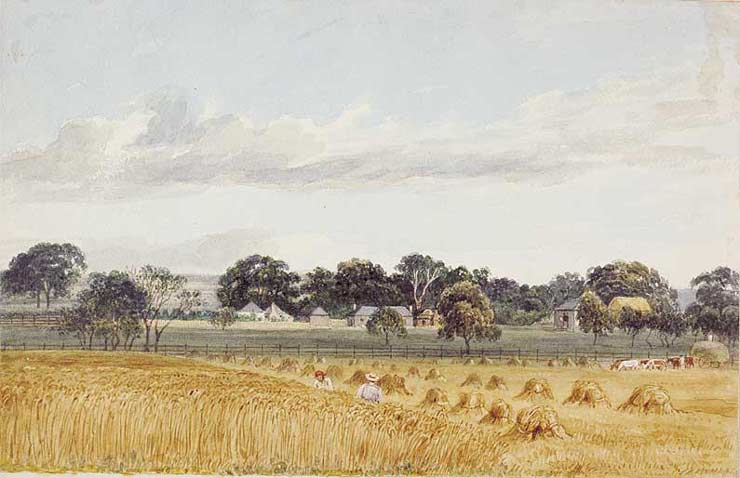 'Cultivation paddock, Challicum', c1850
'Cultivation paddock, Challicum', c1850
TLF ID R3303
This is a watercolour by Duncan Cooper that shows the cultivation paddock at Challicum, a sheep run west of Ballarat in western Victoria. Two figures in the foreground are manually harvesting a cereal crop, while on the left of the paddock, a bullock-drawn dray collects the stooks (bundles) of harvested crop. The various cottages and buildings of Challicum form a backdrop. The watercolour, which measures 12.6 cm x 19.4 cm, is the sixth watercolour included in a field album that Cooper called 'The Challicum Sketch Book'.
